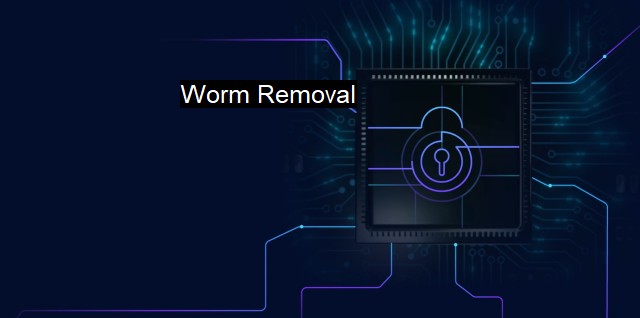What is Worm Removal?
How to Protect Your System from Worms: Essential Steps for Effective Worm Removal and Prevention
Worm removal refers to the effective process of detecting, quarantelling, and removing computer worms that are in a computer system, network, or an individual device such as a computer, smartphone or any other mobile devices. This is a critical element of cybersecurity, implemented primarily through various antivirus software available on the market today.A worm, in a technological context, is a software created by cybercriminals with the objective of damaging a computer system or network by modifying system settings, deleting files, changing file data or copying itself to a host machine. It spreads from one computer to another without needing to be attached to an executable file in the way that a computer virus does. Worms can rapidly reproduce to infect an entire network within minutes even with minute permissions or loopbacks.
Worm removal is carried out using reliable antivirus software that is designed to detect harmful code based on a range of heuristics or predefined virus definitions. This process is imperative to protect the sensitive information stored in computers or networks as worms can lead to severe negative impacts, from data theft to complete system shutdown.
Antivirus software regularly scan the system for any potential threats, and when a worm is detected, it is immediately isolated to prevent further spreading. After isolation or quarantine, the antivirus proceeds with deletion or repairs the infected files. This action is known as worm removal or disinfection, with the former pertaining to the action's irreversible nature. Without a powerful antivirus, these worms can remain undetected, posing a significant threat as it infiltrates deeper into the system.
Beyond the significant data breaches that worms can cause, they go further to compromise the system's performance. They can use the system's resources to reproduce, and this causes the machine to slow down or even crash in severe infections. As such, worm removal does not only ensure data safety. It also brings the additional advantage of improving the overall performance of the affected machines.
Modern antivirus and cybersecurity systems have also utilized automated updates for the identification of new threats. Most worms are designed to avoid detection or removal by antivirus software, with their programmers continuously altering worms' signature codes to confuse the system. With automated updates, the antivirus continuously adapts to these changes as they come, improving their ability to counter these threats.
Worm removal is not only reliant on technology. It is equally important to note the significance of educating system users. This includes best practices that prevent worm infection in the first place, like not opening suspicious emails, downloading unknown files or programs, or visiting unreliable websites.
No matter the effort in implementing cutting-edge antivirus systems, zero-day threats pose an active danger. Zero-day threats are defined as threats that are not yet known in the market, hence do not yet have a solution available. As such, proactive strategies such as regular threat hunting, software updates, data backups, and password management should be practiced in addition to an antivirus system for robust prevention and protection.
Worm removal plays a critical role in maintaining system security and privacy. With cybercrime continually evolving, people and entities globally must place a premium on the steps required to detect, isolate, and remove the threats that worms pose. Regular updating and optimizing of antivirus software is important. Still, human caution should not be undervalued; it must be viewed as part of the package in guaranteeing a strong defence against cybersecurity threats.

Worm Removal FAQs
What is worm removal?
Worm removal refers to the process of detecting and deleting or quarantining worms from a computer system. Worms are a type of malicious software or malware that spread through networks and can cause serious harm to the system.What are the signs of a worm infection?
Some signs of a worm infection include sluggish performance, unusual network activity, frequent crashes, and changes in system settings. If you suspect your computer might be infected, it's important to run a virus scan as soon as possible.How can I prevent worm infections?
To prevent worm infections, it's important to keep your antivirus software up-to-date, avoid clicking on suspicious links or opening email attachments from unknown senders, and keep your operating system and software applications patched with the latest updates. Regularly scanning your system for malware can also help prevent infections.What should I do if my antivirus software detects a worm?
If your antivirus software detects a worm, follow the instructions provided by the software to remove, quarantine, or delete the infected files. It's important to run a full system scan after removing the worm to ensure that your system is completely clean. Additionally, consider changing all passwords associated with your system to prevent any further unauthorized access.| | A | | | B | | | C | | | D | | | E | | | F | | | G | | | H | | | I | | | J | | | K | | | L | | | M | |
| | N | | | O | | | P | | | Q | | | R | | | S | | | T | | | U | | | V | | | W | | | X | | | Y | | | Z | |
| | 1 | | | 2 | | | 3 | | | 4 | | | 7 | | | 8 | | |||||||